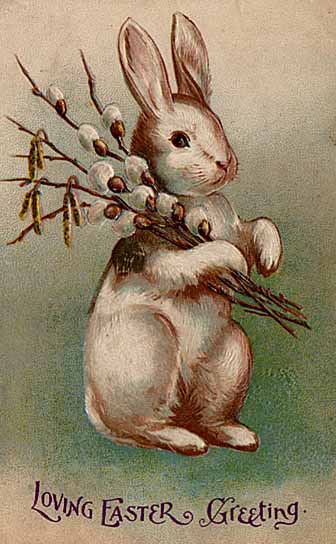https://en.wikipedia.org/wiki/%C4%92ostre
Theories connecting Ēostre with records of Germanic Easter customs, including hares and eggs, have been proposed. Old English Ēostre continues into modern English as Easter and derives from Proto-Germanic **Austrǭ, itself a descendant of the Proto-Indo-European root *h₂ews-, meaning 'to shine' (modern English east also derives from this root). In Northern Europe, Easter imagery often involves hares and rabbits. Citing folk Easter customs in Leicestershire, England where "the profits of the land called Harecrop Leys were applied to providing a meal which was thrown on the ground at the 'Hare-pie Bank'", late 19th-century scholar Charles Isaac Elton theorizes a connection between these customs and the worship of Ēostre.

